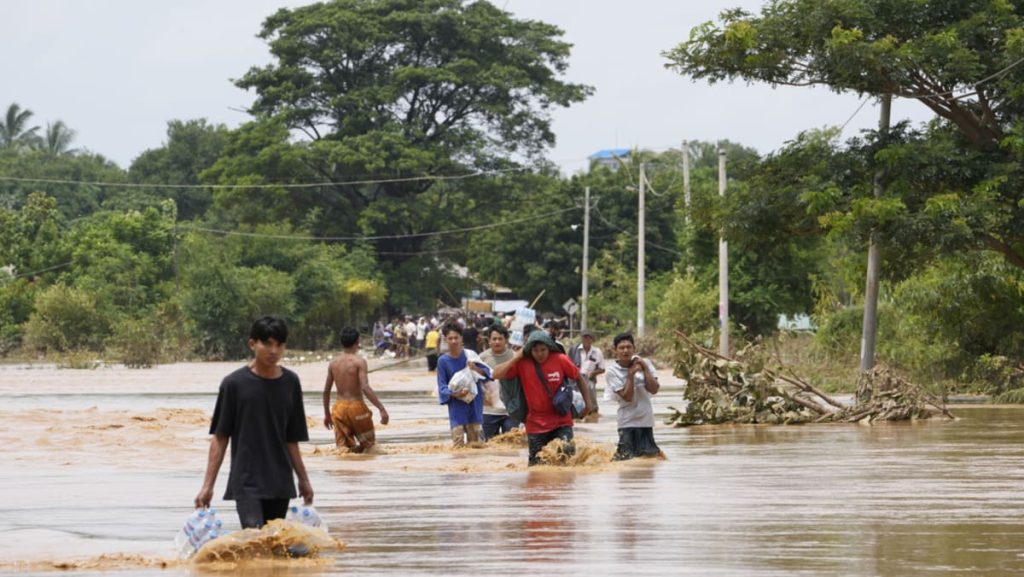Massive flooding caused by Typhoon Yagi in Myanmar has resulted in a death toll of 226, according to state media reports. The United Nations has warned that up to 630,000 people may require assistance due to the widespread devastation caused by the typhoon. Yagi had swept through several countries in the region, including northern Vietnam, Laos, Thailand, and Myanmar, resulting in over 500 reported fatalities from floods and landslides.
State TV in Myanmar confirmed the increase in the death toll to 226, with 77 people still missing, which is double the previous count of 113. The floods have also destroyed nearly 260,000 hectares of rice paddies and other crops, severely impacting the agricultural sector in the affected areas. The United Nations Office for the Coordination of Humanitarian Affairs (UNOCHA) reported that an estimated 631,000 people have been affected by the flooding in Myanmar, highlighting the urgent need for food, drinking water, shelter, and clothing.
Challenges in relief efforts include downed communication lines, blocked roads, and damaged bridges, hampering the delivery of aid to affected areas. Poor communication infrastructure has made it difficult to assess the full extent of the casualties and damages caused by the floods. More than 150,000 homes have been flooded, leading to the opening of over 400 relief camps by the junta in Myanmar.
The United Nations’ World Food Programme described the floods in Myanmar as the worst in recent history, surpassing previous disasters such as the severe flooding in 2011 and 2015, as well as the devastating Cyclone Nargis in 2008. The junta issued a rare appeal for foreign aid, with India being the only country to respond by sending 10 tons of relief materials. UNOCHA emphasized the urgent need for additional resources to support the relief efforts in Myanmar.
Myanmar has a history of blocking or hindering foreign humanitarian assistance, particularly in the aftermath of natural disasters or conflicts. The junta’s restrictions on aid groups and relief efforts have been a challenge in providing assistance to the affected population. Prior to the recent floods, Myanmar was already dealing with the impact of years of conflict between the military junta and armed opposition groups, resulting in millions of people being displaced from their homes.
The combination of natural disasters, such as the recent flooding, and ongoing conflicts have created a humanitarian crisis in Myanmar. The urgent need for food, water, shelter, and clothing for the affected population has been exacerbated by the challenges in delivering aid due to damaged infrastructure and communication lines. The international community, including the United Nations and neighboring countries, has been called upon to provide support and resources to address the pressing needs of those affected by the floods in Myanmar.


